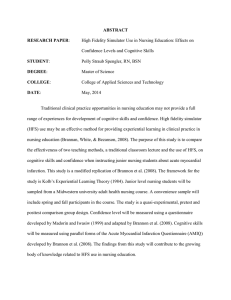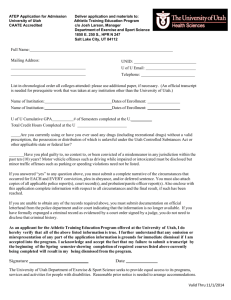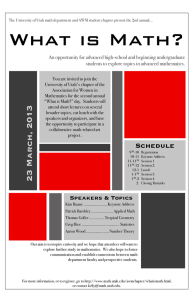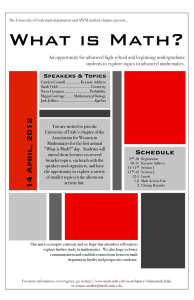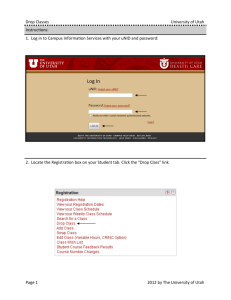Mathematical challenges in modeling high-rate failure Assoc. Prof. Rebecca M. Brannon
advertisement
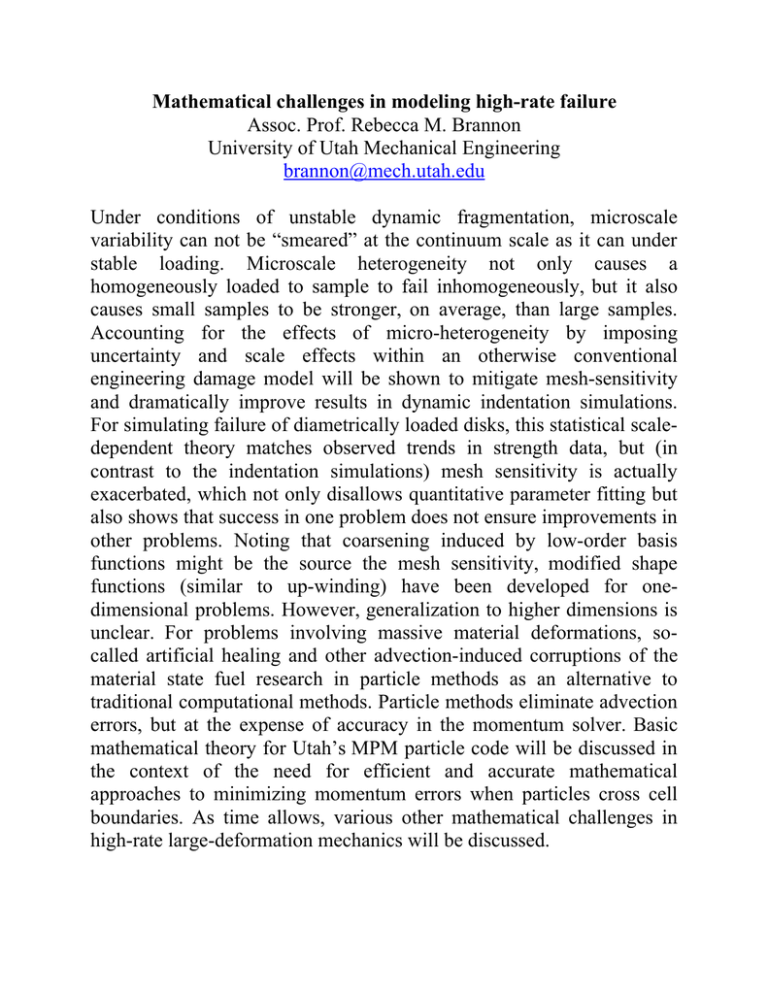
Mathematical challenges in modeling high-rate failure Assoc. Prof. Rebecca M. Brannon University of Utah Mechanical Engineering brannon@mech.utah.edu Under conditions of unstable dynamic fragmentation, microscale variability can not be “smeared” at the continuum scale as it can under stable loading. Microscale heterogeneity not only causes a homogeneously loaded to sample to fail inhomogeneously, but it also causes small samples to be stronger, on average, than large samples. Accounting for the effects of micro-heterogeneity by imposing uncertainty and scale effects within an otherwise conventional engineering damage model will be shown to mitigate mesh-sensitivity and dramatically improve results in dynamic indentation simulations. For simulating failure of diametrically loaded disks, this statistical scaledependent theory matches observed trends in strength data, but (in contrast to the indentation simulations) mesh sensitivity is actually exacerbated, which not only disallows quantitative parameter fitting but also shows that success in one problem does not ensure improvements in other problems. Noting that coarsening induced by low-order basis functions might be the source the mesh sensitivity, modified shape functions (similar to up-winding) have been developed for onedimensional problems. However, generalization to higher dimensions is unclear. For problems involving massive material deformations, socalled artificial healing and other advection-induced corruptions of the material state fuel research in particle methods as an alternative to traditional computational methods. Particle methods eliminate advection errors, but at the expense of accuracy in the momentum solver. Basic mathematical theory for Utah’s MPM particle code will be discussed in the context of the need for efficient and accurate mathematical approaches to minimizing momentum errors when particles cross cell boundaries. As time allows, various other mathematical challenges in high-rate large-deformation mechanics will be discussed. Name: REBECCA M. BRANNON Address: Dept. of Mechanical Engineering University of Utah Rm. 2134 Merrill Engineering 50 S. Central Campus Dr. Salt Lake City, UT 84112 Work Phone: Fax Number: Mobile Phone: (801) 581-6623 (801) 585-9826 (801) 662-8340 Email Address: brannon@mech.utah.edu Web page: www.mech.utah.edu/~brannon Rebecca Brannon earned her Ph.D. in 1992 from the University of Wisconsin. Following fourteen years at Sandia National Laboratories (with visiting appointments with Los Alamos National Laboratory, the Air Force Research Laboratory, and the University of New Mexico), Dr. Brannon has recently joined the Department of Mechanical Engineering at the University of Utah. She specializes in computational tensor analysis applied to inelasticity and high-rate massive deformation of geological materials, ceramics, ferroelectrics, and metals. Her current research is focused on constitutive model verification testing related to aleatory uncertainty in numerical simulations of quasi-brittle media. By invitation from TU Delft’s research school, Dr. Brannon has conducted an international short course based on her internet book, “Functional and structured tensor analysis for materials modeling.” Dr. Brannon invests in higher education through her role as an adjunct professor and university accreditor for the American Society of Mechanical Engineers. Having served as an organizer for the American Physical Society (APS) Shock Compression of Condensed Matter conference, Dr. Brannon has completed an invited book chapter on plasticity for an APS-sponsored shock physics handbook. She has given a plenary lecture at the International Hypervelocity Impact Symposium and keynote presentations at the International Conference on Plasticity (Kauai, HI) and the 8th US National Congress on Computational Mechanics (Austin, TX). Throughout her career, Dr. Brannon has been routinely solicited by others to engage in research, such as a $1.5M project (while at Sandia Labs) to improve the underlying constitutive theory of damage models and to rectify computational drawbacks (mesh-dependence) for brittle damage models in large scale production simulations. More recently, she was specifically solicited to be a $750k partnering PI in a $2.5M proposal for a Center for Traumatic Brain Injury based at Purdue University. Research interests: Accuracy/stability/efficiency/portability of computational plasticity models for metals, rocks, and bone. Damage and failure (stability analysis, statistical uncertainty, size effects, and mesh-dependence). Hypervelocity impact (blast, penetration, perforation, tunnel collapse, shock-induced phase changes). Thermodynamics of constitutive modeling with both reversible and dissipative induced anisotropy. Deleterious effects of conventional momentum solvers on constitutive model performance. Continuum mechanics, curvilinear and Cartesian tensor analysis, and visualization of tensor fields. Verification and validation of constitutive models; reliability of simulations. Frame indifference and alternatives to objective rates in finite deformation. Accelerated installation and maintenance of material models in multiple codes. Use of X-ray computed tomography (XCT) in validation of damage predictions.

